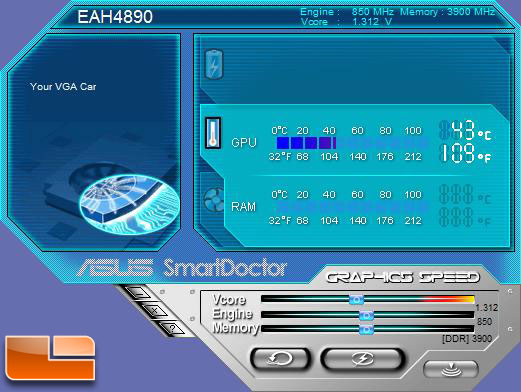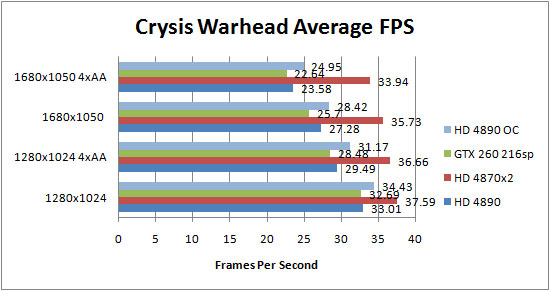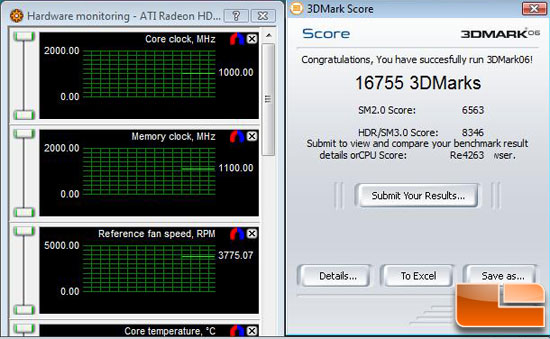ASUS Radeon HD EAH4890 HTDI/1GD5 Video Card
Thermals, Smart Doctor and Overclocking
Graphic card manufacturers have been trying for years to provide extra value in their cards with custom in-house applications to tweak the cards. The last Asus card I reviewed, the Asus HD 4870 Matrix, had a sweet application called iTracker that let the user adjust the GPU and GDDR5 voltages in addition to the GPU and GDDR5 clocks and fan speeds. With this HD 4890 Asus has integrated the same features into Asus SmartDoctor. I honestly cannot stand the GUI design; it took me way longer than necessary to find the close window button, but the features are appreciated. Now we just need Catalyst Control to support these features.

When actually overclocking the Asus HD 4890 I found it to be much easier to use the latest Rivatuner 2.24 with the HD 4890 config file. I was able to push the clocks up from 850Mhz core, 975MHz memory to 950MHz core and 1100MHz memory for 24/7 usage. For short bench runs I was able to get the core up to 1000MHz-1020MHz but it would artifact past that even with additional voltage.
Not surprisingly, the Asus HD 4890 heatsink manages to keep things incredibly cool with 43C idle temperatures in a room with 27C ambients. After looping 15 minutes of the 3DMark 2006 Game Test 3 at stock clocks, the GPU temps were up to 58 Celsius and had been stable for the previous 11 minutes. This shaves a good 25 to 30 Celsius from the stock cooler temperatures and the dual fan cooling solution helps to cut down on the whine from the hamster wheel of a fan in the stock heatsink.

These runs were performed with the GPU overclocked to 950MHz core and 1100MHz memory, a modest 11% overclock on the GPU and a 15% overclock on the memory. While nowhere near enough to catch the HD 4870×2, it was enough to pull away from the GTX 260 216sp.


Comments are closed.